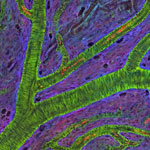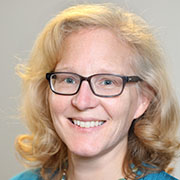This page is historical material reflecting the Feedback Loop Blog as it existed on
February 25, 2014. This page is no longer updated and links to external websites
and some internal pages may not work.
February 25, 2014
Blood vessels in a mouse retina visualized using cutting-edge imaging technology. Credit: Tom Deerinck and Mark Ellisman, NCMIR.
For poets and lovers, the eyes are the windows of the soul. For scientists and doctors, blood vessels at the back of the eye are windows into many diseases.
Blood vessel abnormalities can indicate a variety of serious conditions such as atherosclerosis (hardening of the arteries), heart attacks and strokes. But most vessels are buried beneath skin and other tissues, making them difficult to examine without surgery.
There’s one exception—in the eye. Unlike anywhere else in the body, larger vessels on the retina at the back of the eye are directly visible through the pupil, requiring essentially only light and magnifying lenses to view.
These vessels are used to diagnose glaucoma and diabetic eye disease. Because they display characteristic changes in people with high blood pressure, some researchers hope retinal vessels might one day help predict an impending stroke, congestive heart failure or other diseases stemming from dangerously high blood pressure.
The medical importance of retinal vessels piqued the interest of scientists funded by the National Institutes of Health at the National Center for Microscopy and Imaging Research (NCMIR) at the University of California, San Diego, who captured this micrograph image of mouse retinal vessels.
Continue reading this new
Inside Life Science article
About the Author
Originally trained in biochemistry, Alisa wrote about the full range of NIGMS-supported research before transferring to the National Institute of Arthritis and Musculoskeletal and Skin Diseases in April 2020. She managed the NIGMS image and video gallery, and helped foster science education at NIH.


